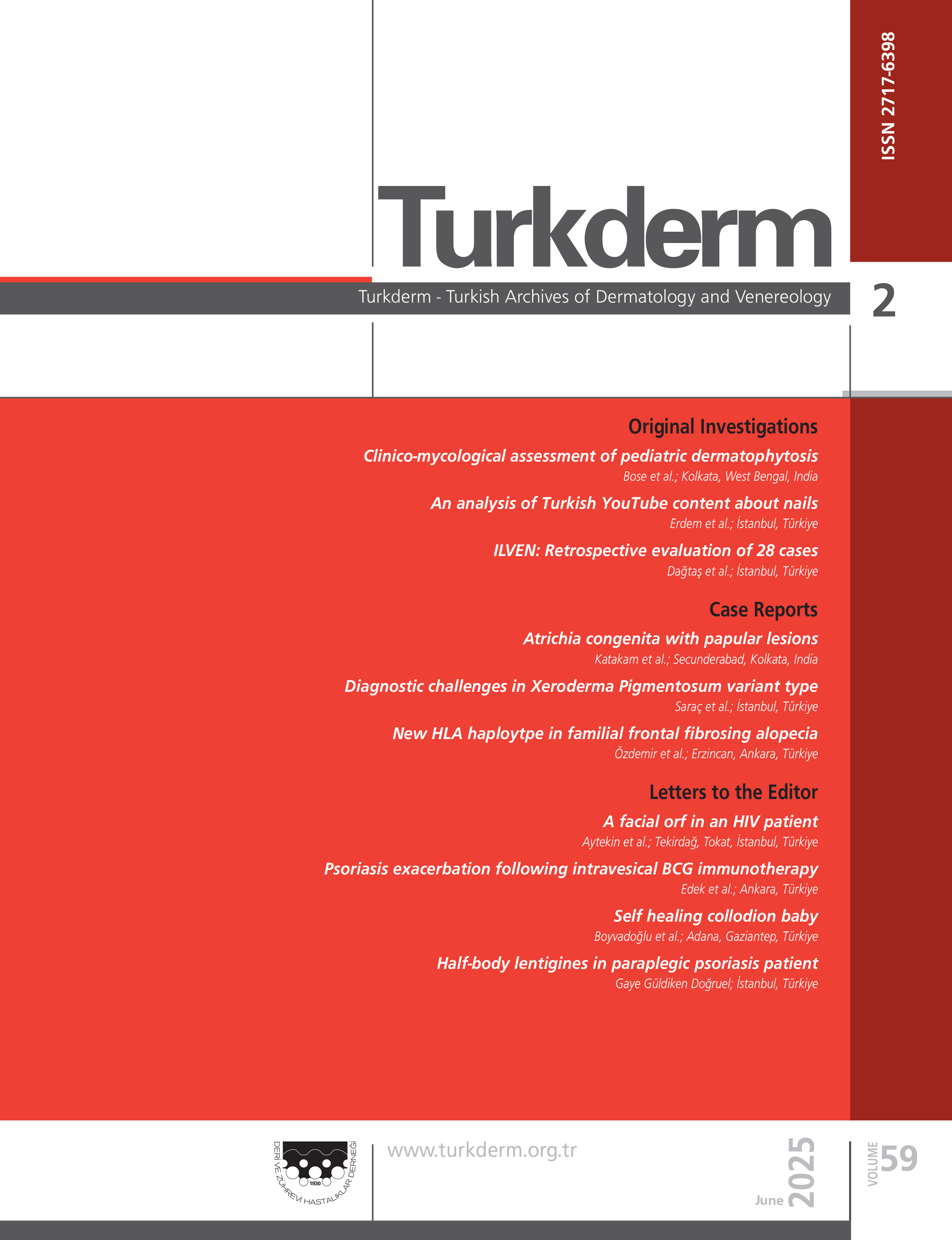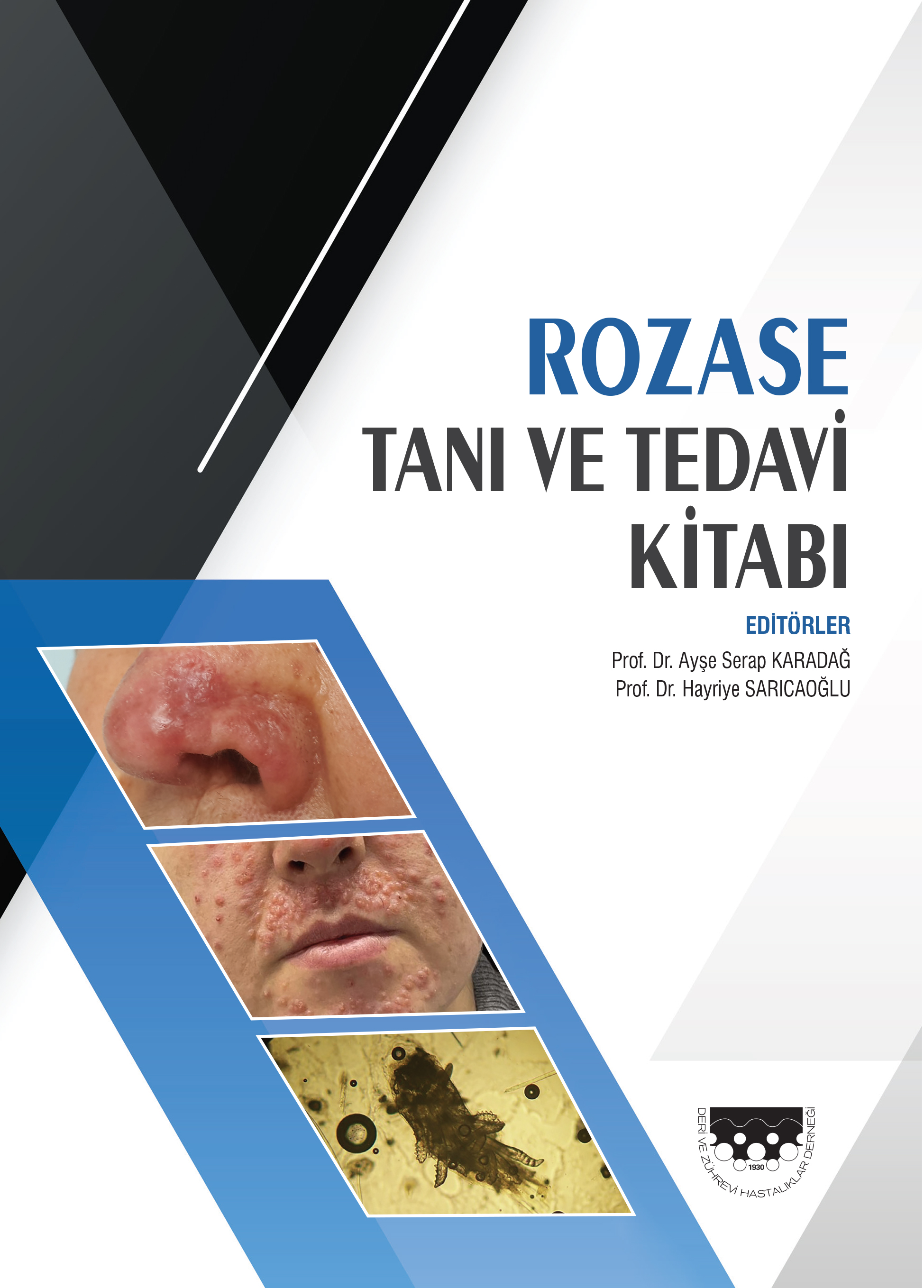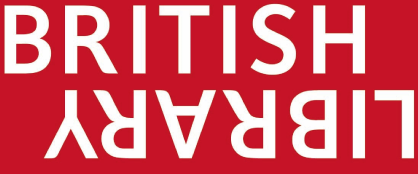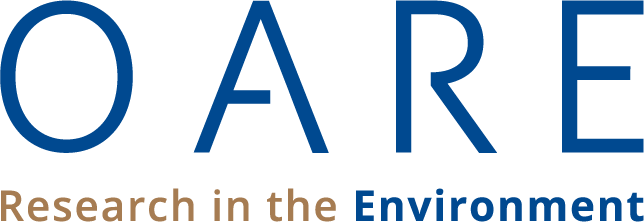Volume: 39 Issue: 3 - 2005
| EDITORIAL | |
| 1. | Topikal Immunomodulatörlerin Yeni Endikasyonlar İnci MevlitoğluPages 166 - 169 Abstract | |
| REVIEW ARTICLE | |
| 2. | Skin infections and dermatoses related to swimming pool water exposure Ayşe Deniz Akkaya, Ayşe Tülin Mansur Pages 170 - 175 Exposure to swimming pool water, due to humidity and the warm temperature of the water, can result in the spreading of infectious diseases, such as dermatophytosis, human papilloma virus infections and molluscum contagiosum. In addition, poor sanitation, overcapacity and inadequate disinfection of pools may cause serious infections, such as pseudomonal and mycobacterial infections. Apart from infectious diseases, certain dermatoses may develop depending on the properties of the pool water and the duration of exposure to the pool water. In this article we discuss the clinical manifestations, preventive measures and the treatment of pool water related infections and dermatoses. |
| ORIGINAL INVESTIGATION | |
| 3. | nm23 expression in primary cutaneous malignant melanomas Şule Özsoy, İrem Paker, Selda Seçkin Pages 178 - 181 Background and Design: We investigated the correlation between nm23 and tumor depth in primary cutaneous malignant melanomas (PCMM). Materials and Methods: Sixteen cases in sun-exposed areas and 10 cases in nonexposed areas were included into the study. Clark Levels (CL) were determined to evaluate tumor depth. Immunohistochemically more than 10% of cytoplasmic staining by nm23 was assessed in a semiquantitative fashion. The extent of staining was estimated as (+), (++), (+++), the intensity of staining was graded as (+), (++), (+++). Results: There were totally 6 PCMM cases with low Clark level (CL I, II, III). The extent of nm23 staining was as follows: in 4 cases (+++), in 1 case (++) and in 1 case (+). The intensity of staining was in 5 cases (+++), in 1 case (++). There were 20 PCMM cases with high CL (CL IV, V). The extent of nm23 staining was as follows; in 15 cases (+++), in 2 cases (++), there was no staining in 3 cases. The intensity of staining was (+++) in 6 cases, (+) in 5 cases, (-) in 3 cases. No significant difference regarding the nm 23 positivity was observed in PCMM in sun exposed areas and nonexposed areas. Conclusion: In all of the cases with low CL there was nm23 staining. This finding suggests tumor suppressor potential of nm23. But the number of cases with high CL that weren't stained by nm23 was fewer on the contrary of the expected. We thougt that nm23 expression may not be related to the depth of tumor invasion. Besides the fewer expression of the nm23 in PKMM in sun exposed areas may suggest the more aggressive behaviour in those tumors. |
| 4. | Bazal Hücreli Karsinoma ile Skuamoz Hücreli Karsinomanın Histokimyasal Özelliklerinin Bax, Bcl-2 ve Ki-67 ile Belirlenmesi Başak Kandi Coşkun, Bengü ÇobanoğluPages 185 - 188 Background and design: The present study aimed at investigating the expression characteristics of bax and Bcl-2 proteins as well as the relation between Ki67, known to be a proliferation marker, and the two tumors immunohistochemically. Material and method: Twenty squamous cell carcinoma (SCC) and 20 basal cell carcinoma (BCC) cases were evaluated by immunohistochemical method using bax, Bcl-2 and Ki67 antibodies. There were marked differences between Bax, Bcl-2 and Ki67 values in SCC and BCC. Result: An overall evaluation showed that Bcl-2 was highly positive, whereas Bax expression was ignorable in BCC. However, Bax was evidently positive in most SCC cases. Ki67 was positive at variable degrees in 90% of SCC cases, but only slightly positive in 10% of BCC cases. The fact that Bax positivity is more evident in SCC and Bcl-2 positivity in BCC demonstrates that apoptosis is more marked in SCC. Conclusion: This result suggests that although apoptosis is not strongly related with Bax in BCC, Bcl-2 gene family regulates apoptosis activity. In SCC cases with a more aggressive course, Ki67 was found high in relation to the degree of differentiation. However, number of literature studies addressing this topic is limited; therefore studies including a higher number of cases are needed. |
| 5. | The prevalence of verrucae among tradesmen who sell or cut meat at the city center of Isparta İlkay İçke, Pınar Yüksel Başak, Reha Demirel, Vahide Baysal Akkaya Pages 192 - 197 Background and Design: The association of high prevalence of hand warts in butchers was first reported more than 30 years ago and subsequent studies have supported this finding. We aimed to investigate the prevalence of verrucae among the tradesmen who dealed with meat, fish and chicken meat in Isparta and to compare them with groceries at the same sociocultural level who did not contact with meat. Materials and Methods: A detailed questionnaire was applied to the study group consisting of tradesmen dealing with meat and to the control group consisting of groceries, each of which have 155 individuals. Both of the groups were examined whether they had verrucae on their hands or not. Results: The rate of verruca vulgaris in the study and control groups were 17.4% and 6.0% respectively (p<0.001). Verruca vulgaris was found to be significantly common among butchers compared with groceries (p<0.001). Conclusion: Verruca vulgaris is frequently seen among people dealed with meat like butchers and this is an important problem of public health because of the risk of contamination by direct contact. The results of our study was compatible that the verruca vulgaris was more frequent in the meat industry workers in our region. In our country, there are few published studies on this subject and this problem is still important regarding public health. We believe that it is necessary to perform epidemiological studies in the related occupational groups so as to inform about autoinoculation and contamination of verrucae. |
| 6. | A new teledermatology application: store-and-forward method combined with web camera use Mete Baba, Deniz Seçkin, Serhan Kapdağlı, Aydolu Eryılmaz Pages 199 - 203 Background and design: In this study, agreement between the results of face-to-face examination and teledermatology application performed by combined use of store-and-forward method and web cameras was investigated. Material and method: A hundred patients were included in the study. Patients were examined by two teledermatologists (A and B) via the teledermatology application in which store and forward method is combined with web cameras, then were reexamined face-to-face by third dermatologist. Results: When the results of face-to-face and teledermatology examinations were compared, the diagnostic agreement value (k) of teledermatolog A was 0.70, whereas that for teledermatologist B was 0.62. About patient management plans, the agreement value of teledermatolog A was 0.68, whereas that for teledermatologist B was 0.64. Conclusion: The use of store-and-forward method combined with web cameras may be a good alternative for future teledermatology applications. |
| TURKDERM-9860 | |
| 7. | A case of tinea incognito due to trichophyton rubrum Ayten Ferahbaş, Çağdaş Atasavun, Özlem Canöz, Murat Borlu, A. Nedret Koç, Serap Utaş Pages 204 - 207 The term tinea incognito refers to dermatophyte infections with clinical presentations that have been modified by the administration of corticosteroids, which is prescribed as a result of incorrect diagnosis. In this case report, we describe a 29-year-old woman who had generalized tinea incognito due to Trichophyton rubrum after receiving treatment with both topical and systemic corticosteroids. It has been reviewed with knowledge of recent medical literature. |
| 8. | A vulvocrural localized Hailey-Hailey case responsive to methotrexate treatment Hümeyra Öztürk Tenekeci, Pınar Yüksel Başak, Vahide Baysal, Nermin Karahan Pages 208 - 210 Hailey-Hailey disease is an autosomal dominant inherited dermatosis characterized by vesicular and crusted lesions in the intertriginous regions. The treatment alternatives include classical treatment choices like oral and topical corticosteroides, antibiotics, dapsone, cryosurgery, surgical excision and new treatment alternatives like botulinum toxin, dermabrasion with carbon dioxide laser, photodynamic therapy, topical tacrolimus, topical tacalcitol and methotrexate. This Hailey-Hailey case is presented because of improvement with methotrexate therapy applied for five months. No recurrence was observed within four months after cessation of treatment. |
| 9. | Unilateral nevoid telengiectasia Gül Fındık, Fatma Aydın, Levent Yıldız, Nilgün Şentürk, Tayyar Cantürk, Ahmet Yaşar Turanlı Pages 211 - 213 Unilateral nevoid telangiectasia is a disease in which fine telangiectasia develop in a unilateral, sometimes dermatomal distribution. This disease was first described by Blascho in 1899 and there have been fewer than 100 reported cases heretofore. Unilateral nevoid telangiectasia may be congenital or acquired. Whereas congenital forms mainly seen in men, acquired forms seen in female. However etiopathogenesis is still uncertain, high estrogen levels may be responsible in women. Herein, we present a 40 year-old female patient with a diagnosis of acquired unilateral nevoid telangiectasia involving C3 dermatome and mandibular branch of trigeminal nerve with normal estrogen levels. |
| TURKDERM-6637 | |
| 10. | Türkiye Deri ve Zührevi Hastalıklar Dernekleri Platformu çalışmalarına başladı Page 214 Abstract | |
| NEW PUBLICATIONS | |
| 11. | Yeni Kitaplar Page 215 Abstract | |























